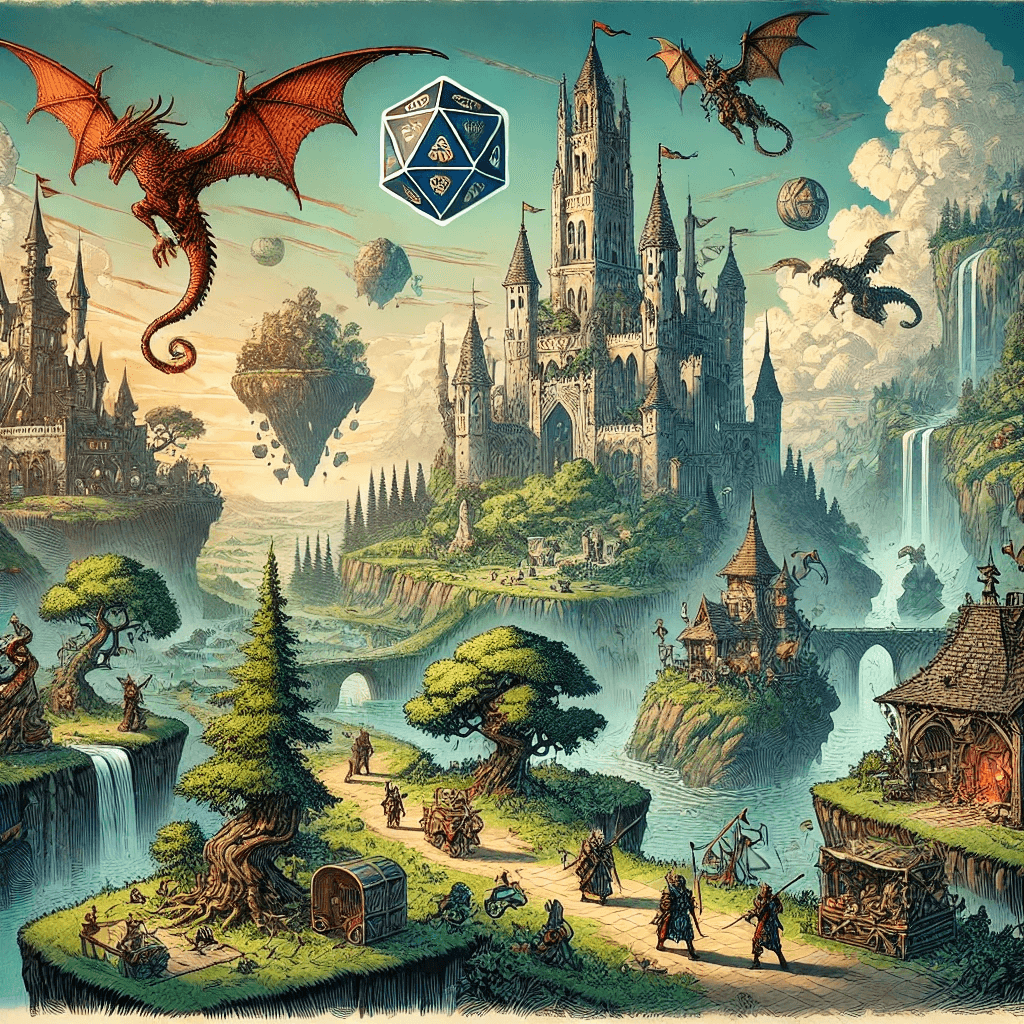Newsletter-30/09/2024
September '24: The Future of Play
This month, we're looking at the future of play in the age of infinite content, as well as our usual roundup of interesting links, reads and listens.

Hello and welcome to the September newsletter.
This month, we take a look at the AI tools transforming the future of gaming and play.
And in case you missed it, watch some of our founders answering a lucky dip question about being a successful tech founder. No prep allowed!
Enjoy.
Mattias and the Moonfire team
🌓🔥
The Snapshot
Here's a quick roundup of interesting stuff we saw this month:
- A big week for optimists.
- OnlyFans creators earned more than all NBA players combined last year.
- Raising a seed round 101.
- Paul Graham's Founder Mode essay.
- Summaries of Paul Graham on how to raise money and YC's approach to sales.
- The collapse of China's startup ecosystem.
- The increasing super-sizing of early rounds.
- Building a nuclear fusor at home with Claude Sonnet – great example of how you can speedrun ideation and execution with AI tools.
What's Up at Moonfire?
Gaming in the time of infinite content

LLMs have already reduced the friction and cost of text production down close to zero. As the cost of inference continues to fall and context windows grow, the same will soon apply to images, music, video – and games.
First, it will transform the development pipeline.
According to a 2023 survey by a16z, 87% of game studios are already using AI in their workflow in some way. AI agents are replacing human testers to look for bugs, and Ubisoft has been using its own in-house Ghostwriter to write “barks” – background phrases or sounds made by NPCs (non-playable characters). AI takes on the repetitive grunt work so developers and writers can focus on more critical, plot-driven aspects of the game.
Roblox and EA are taking this a step further, both working on tools that allow developers – and users – to make 3D environments and scenes with nothing but text prompts, powered by proprietary datasets of hundreds of thousands of high quality 3D assets. What used to take weeks or months can be done almost instantly. Right now, it’s small scale, generating racetracks and such, but it could eventually build entire virtual cities. What Sora and Kling are doing for text-to-video, Roblox and EA – and soon others, no doubt – will do for text-to-video game.
The role of AI here is not to replace human creativity, but to augment it. It frees developers from the tedium of repetitive tasks, like generating variations of assets and incidental dialogue, allowing them to focus on the elements that matter: storytelling, world-building, and character development. Human imagination and machine efficiency. Much like how tools like Cursor help software developers write code faster without replacing them, AI in gaming helps creators focus on the elements that make games special. Smaller teams and individual creators will be able to create rich, detailed games much faster.
The first experiments, like ChatGPT-powered dialogue mods for existing games like Skyrim, might be clunky, but they show the promise for more dynamic NPCs and worlds. It would allow games to respond dynamically to player decisions while maintaining a cohesive narrative arc, enabling more immersive and interactive game worlds, where NPCs react intelligently to player actions. Branching storylines and large, reactive worlds are possible today, but it's entirely manual. Games are meticulously crafted by writers, developers and actors, with every single dialogue tree and quest branch plotted by hand. And this process becomes increasingly labour-intensive as games grow more open-ended and complex. Red Dead Redemption 2 contained an estimated 500,000 lines of dialogue, voiced by around 700 actors. That sort of work is unattainable by smaller studios, but AI could help change that.
But beyond improving the development pipeline, AI has the potential to redefine what we even consider a game to be and lead to entirely new forms of play, blurring the line between passive and active entertainment. You already see this playing out in a fragmented way: people play a game and then jump onto YouTube or Twitch to watch someone else play the same game. Generative AI can push this further, enabling interactive videos that cater to these multiple forms of consumption – you could choose to sit back and watch it like a TV show, or actively play it. Scriptic is already pursuing this in a phone-first medium, blending gameplay with interactive storytelling. Interactive video is nothing new, but AI makes it possible at scale.
And this extends beyond entertainment. AI-generated simulations could be used to model cities, ecosystems, and physical systems, for education, research, and policy-making. Imagine policymakers running simulations to explore the impact of various decisions at the societal level, using AI agents to mimic human behaviour. It’s a new kind of gamification – one where we can test the outcomes of real-world decisions in complex, AI-driven simulations.
By making creation much easier, we could also see individuals creating their own games for their own consumption. The process of game development becomes a form of play in itself, where creation and enjoyment blur together.
This has been a big part of the fun of tabletop role-playing games (like Dungeons & Dragons or Call of Cthulu) since the very beginning in the 1970s – players creating “homebrew” adventures and entire worlds just for their home game. Now they can use tools like Quest Portal AI to generate these adventures in real-time at their gaming table.
And look at the launch of Replit’s new AI Agent, which automates a lot of the repetitive work of coding – setting up a dev environment, installing packages, etc. While building it, the team would get together every week to improvise prompts and build things. One of the favourites was a multiplayer game of life. When Agent launched, one of the first things that people created were games: from platformers to flight simulators. These are simple games, but they point to a future where anyone can create games for their own enjoyment, regardless of technical skill.
This will be made even more powerful with tools like Google’s Genie, which you can prompt with text, images, and sketches to generate an endless variety of action-controllable virtual worlds, and GameNGen, the first real-time game engine powered entirely by a diffusion model – the same tech behind DALL-E and Midjourney – that enables real-time interaction with a playable, infinitely generated world. This is just the beginning. We’ll soon have open source foundational models, that people will fine tune and prompt to create their own games or just play around with the foundational model to explore the latent space inside an interactive world. Bring this together with the latest graphical experiences, and infinite, playable generated worlds could be the killer use case for VR.
The tools of creation become so intuitive and easy to use that the act of creating becomes its own form of entertainment. It’s the equivalent of doodling – it’s fun just starting a new project, unsure exactly which direction it will go and where it will take you. And given that just 1% of users on most platforms are creators, even a small change in that number will have an outsized impact on the universe of available content.
Of course, with this flood of AI-generated content comes a big challenge: authorship. Humans are storytellers. And we want other humans to tell those stories. Much of the joy of any art is knowing that another human created it, and getting to experience their vision, their thoughts, and a part of their lives. That connection disappears with AI. But it’s not insurmountable. AI is just another design element. It’s a tool that enables creators small and large to push boundaries, innovate faster, and redefine what gaming – and play – can be.
Thank you to Suveer Kothari, Gunnar Holmsteinn, Nihal Tharoor, and Benedict Tatham for reading drafts of this piece.
Podcast of the Month
“Conversations with Tyler: Tobi Lütke on Creating Shopify for Americans as a German in Canada”
Wide-ranging episode with the founder of Shopify, talking about everything from how VR and AI will change retail to why outsiders make good coders, and how fantasy novels teach better business principles to why there aren't more German tech giants.
Good Read of the Month
“'Chip War: The Fight for the World's Most Critical Technology' by Chris Miller”

There is no other flow in global trade that's larger than the flow of chips into China. Economic historian Chris Miller explores the global battle over semiconductors, tracing their development and showing how they've shaped – and continue to shape – economies, geopolitics and the modern world as we know it.
That’s all for this month.
Until next time, all the best,
Mattias and the Moonfire team
🌓🔥
Authors

Moonfire Team
In this article
Authors






